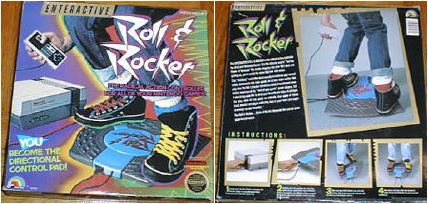corduroygt
Banned
Perhaps someone needs to make an analog foot controller for foward, back, right and left (basketball size foot trackball?).
Ask and you shall receive

Last edited by a moderator:
Perhaps someone needs to make an analog foot controller for foward, back, right and left (basketball size foot trackball?).

I voted no, and would've voted "HELL NO" if it was an option.
I just do not see this catching on with hardcore gamers at all.
Maybe if Halo, or COD does it really well, then it could catch on. But short some sort of huge AAA title that absolutely revolutionizes the control scheme*, it will be nothing more than a gimmick that gets inserted into a few games, but does not leave any lasting impression on the genre, ala SixAxis.
*Which will not happen, since these will be peripherals with a paltry install ratio. It would have to be first party, and the options are pretty limited there. Even if Killzone 3 does it, it's not a big enough franchise to matter, it would have to be one of the really heavy hitters.
I voted "Yes" as i don't think tradpads should die for FPS use, but i do believe that motion controls can bring something fresh and new to the experience... not just for aiming but also for stuff like throwing grenades etc (as has already been said).
Add that to network lag and the lag from an HDtv, and it's the sort of stuff that gets you killed in online games.
What are you basing this on?I believe Move lags about 6ms more than DS3.
What are you basing this on?
Doesn't move include PSEye (possibly running @ 60hz) + image processing. :/
A recent Sony comment that Move was 22ms latency versus 16ms for the DS3, or whatever it was. I don't think that figure includes processing though as Sony have said you can introduce more lag adding smoothing, which I guess is an interpolation of movement between several frames.What are you basing this on?
Doesn't move include PSEye (possibly running @ 60hz) + image processing. :/
Add that to network lag and the lag from an HDtv, and it's the sort of stuff that gets you killed in online games.
Yeah, lag for buttons and the internal gyros should be different than the pointer, which is based on Eye tracking those glowing orbs.
Yeah, lag for buttons and the internal gyros should be different than the pointer, which is based on Eye tracking those glowing orbs.
What are you basing this on?
Doesn't move include PSEye (possibly running @ 60hz) + image processing. :/
Actually, the pointer isn't primarily driven by the glowing orb. The orb is primarily necessary for more accurate Z detection.
